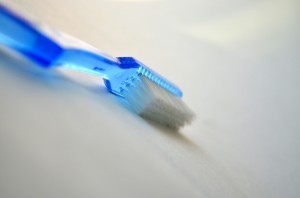The Toothbrush: a History
 The toothbrush of today comes in various different colors, shapes, sizes, styles, and power options (if you are buying an electric variant) so choosing the right one can be hard to do when we are inundated with so many choices at the checkout line.
The toothbrush of today comes in various different colors, shapes, sizes, styles, and power options (if you are buying an electric variant) so choosing the right one can be hard to do when we are inundated with so many choices at the checkout line.
However, we should consider ourselves quite fortunate for having so many brands to choose from. The toothbrush we know today didn’t exist until 1938, when nylon bristles were introduced. Before that boar and other animal hair bristles were common, and first surfaced in China around 1498. Even before that, tribes and early civilizations used “chew sticks” (sticks with frayed edges at one end) for oral hygiene as far back as 3000 BC.
And although the device has been around in some form or another for nearly 5000 years, brushing teeth didn’t become popular in the United States until after the second world war. This was because soldiers were mandated to brush teeth while in the military and continued the habit when the war was over.
Therefore we should count ourselves lucky that we have an entire aisle devoted to dental hygiene as opposed to using sticks that we can find in the backyard.
So what is the best toothbrush?

ADA Logo
Well, that answer depends. A quick and easy rule of thumb is that any product branded as “ADA Accepted” will get the job done. But you may have personal preferences that play into what brush might be right for you.
There are a few different types of brushes to consider:
- Classic: This is what you think of as a normal toothbrush, a long plastic handle that comes in different colors with a bristled head. The main factor for buyers of these toothbrushes is the bristle hardness. Usually a toothbrush will come in soft, very soft, medium, or hard. It is recommended to use soft or very soft as anything harder can damage the gum line over time.
- Electric: Electric toothbrushes must be accompanied by an ADA seal of acceptance. If it does not have one it likely has not been thoroughly tested, may break easily, or may not remove plaque efficiently. However it maybe quicker to use an electric toothbrush because of its back-and-forth motion already built in. Other things to consider are battery life, cost, and whether or not the product has replaceable heads (if it does, you will not have to replace the entire product when the bristles become worn).
- Chewable: Perfect for traveling, these compact plastic brush heads are portable and can be great in a pinch. They are available in some bathroom vending machines, come in different flavors, and emphasize convenience rather than necessity. Simply toss a few in your mouth and chew them like bubble gum.
Finding the right option involves looking at the money you have to spend on a new toothbrush, considering your gum sensitivity, determining the size that you might need at the time and whether or not you plan on traveling soon.
And no matter what, if questions you have about the kind of brush that could be right for you, Vacendak is here to help.
